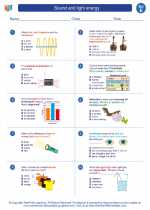Virus: Definition and Characteristics
A virus is a tiny infectious agent that can only replicate inside the living cells of an organism. It is composed of genetic material, either DNA or RNA, enclosed in a protein coat called a capsid.
Key Characteristics of Viruses
- Not Living: Viruses are not considered living organisms because they cannot carry out metabolic processes on their own.
- Host Dependence: Viruses depend on the host cell's machinery to replicate and produce new viral particles.
- Diversity: Viruses can infect a wide range of hosts, including animals, plants, and bacteria.
- Size: They are extremely small, typically measured in nanometers.
Viral Structure and Replication
The structure of a virus consists of genetic material surrounded by a protein coat. Some viruses also have an outer lipid envelope. The replication of a virus occurs in several stages:
- Attachment: The virus attaches to the host cell.
- Entry: The viral genetic material enters the host cell.
- Replication: The viral genetic material is replicated using the host cell's machinery.
- Assembly: New viral particles are assembled within the host cell.
- Release: The newly formed viruses are released from the host cell, often causing cell lysis.
Impact of Viruses
Viruses can have significant impacts on human health, agriculture, and the environment. Some viruses cause diseases in humans and other animals, while others can infect plants and disrupt ecosystems. However, viruses also play essential roles in the regulation of ecosystems and the evolution of species.
Study Guide: Understanding Viruses
To understand viruses, students should focus on the following key points:
- Define a virus and explain its unique characteristics.
- Describe the structure of a virus and the steps involved in its replication.
- Explore the impact of viruses on human health, agriculture, and the environment.
- Discuss the role of viruses in ecosystems and their evolutionary significance.
By mastering these concepts, students can gain a comprehensive understanding of viruses and their importance in the biological world.
.◂Science Worksheets and Study Guides Fifth Grade. Sound and light energy

 Activity Lesson
Activity Lesson
 Worksheet/Answer key
Worksheet/Answer key
 Worksheet/Answer key
Worksheet/Answer key
 Worksheet/Answer key
Worksheet/Answer key
 Worksheet/Answer key
Worksheet/Answer key
 Vocabulary/Answer key
Vocabulary/Answer key
 Vocabulary/Answer key
Vocabulary/Answer key
